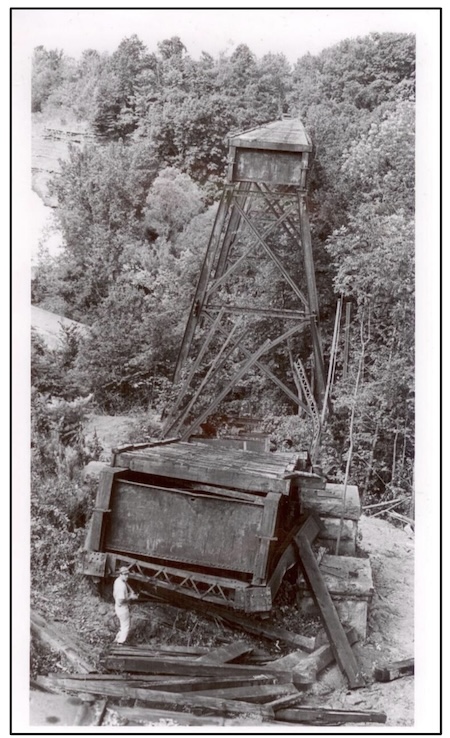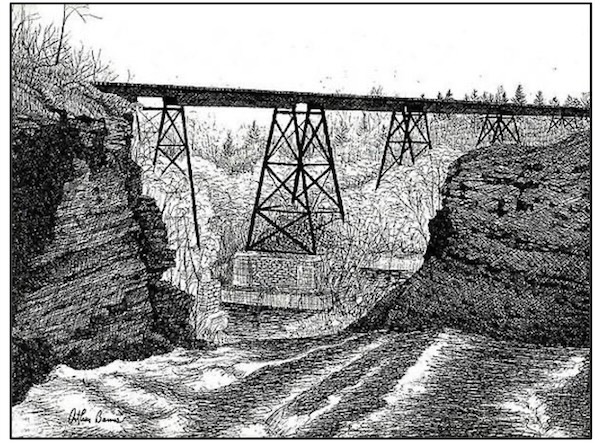The Trestle in Waterport was torn down in 1995 but continues to evoke strong memories

Don Cook, a photographer for The Journal-Register in Medina, captured this image of the demolition of the Hojack bridge on Sept. 11, 1995.
By Catherine Cooper, Orleans County Historian
“Illuminating Orleans” – Volume 5, No. 32
CARLTON – Our recent column on the history of the Hojack Railroad evoked many memories, particularly of teenage hair-raising exploits on the landmark trestle bridge at Waterport.
Built to convey the trains of the Rome, Watertown and Ogdensburg Railroad trains across the Oak Orchard River gorge, the actual dimensions of this impressive structure are unclear. According to one source, it was 500 feet long, 10 feet wide and 200 feet above the river, while another site describes it as having been 800 feet from bank to bank and 90 feet high.

This photograph gives a sense of the scale of the bridge.
At any rate, the railroad line was discontinued in 1978, and the infrastructure soon fell into disrepair. In November 1993, citing missing railroad ties and concerns for the safety of the public as well as of emergency personnel presented by the condition of the bridge, the Town of Carlton went on record to request action from Penn Central.
As it transpired, the title to the bridge was owned by Charles Pelleschi, an avid angler from Summerhill, Pa. He had purchased some vacant railroad property adjacent to Park Avenue, in the Town of Carlton from Penn-Central, with the intention of building a second home there. Much to his surprise, the deed to the land included the bridge.
Mr. Pelleschi decided to have the bridge removed on account of its deteriorating condition. It was dismantled in the fall of 1995 by Jack Weakland of Hastings, Pa. The steel from the bridge was sold to a New York City company and the landmark was no more.
However, it lingers in the memories of many and was captured in this pen and ink drawing by Arthur Barnes.

This artwork of the Trestle in Waterport was done by Arthur Barnes.

























































